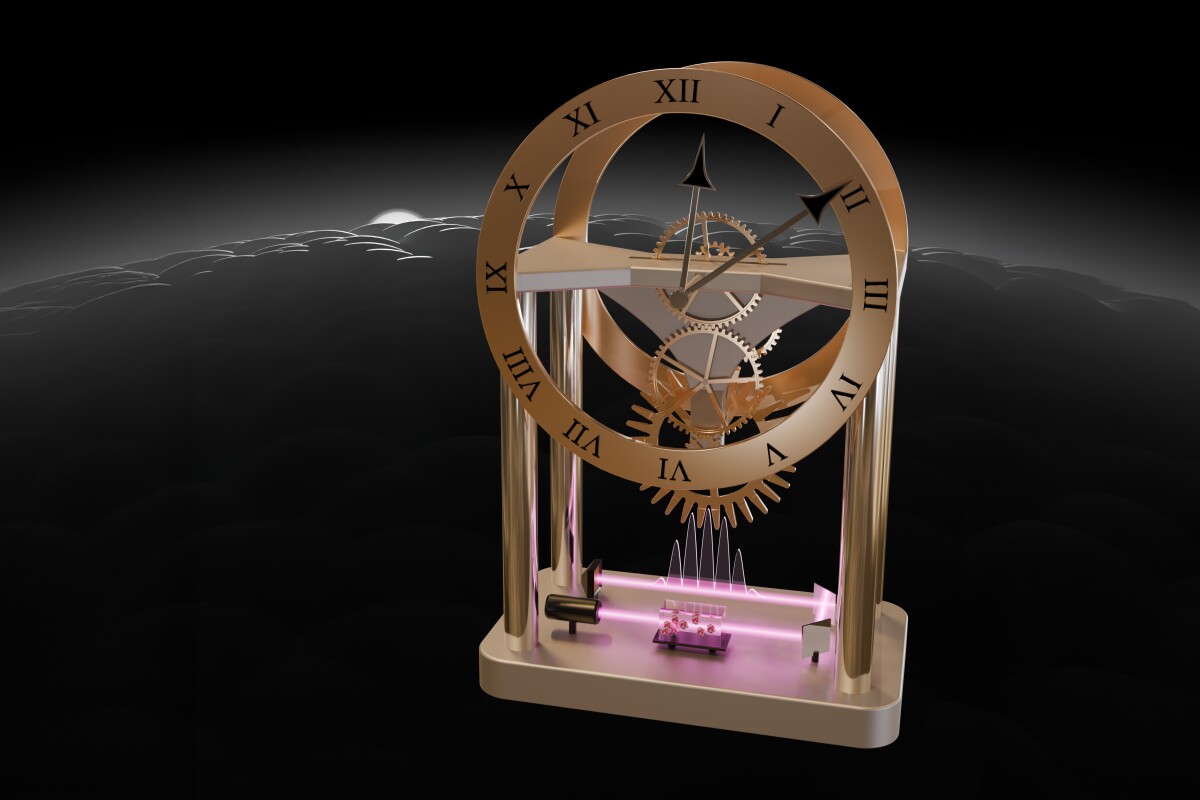World’s First Nuclear Clock May Outperform Atomic Clocks

Oliver Diekmann, TU Wien
Atomic clocks are currently the most precise timekeepers, losing only seconds over billions of years. However, nuclear clocks could potentially surpass them, enhancing GPS and internet technologies. Scientists have now developed and tested the first prototype nuclear clock.
Atomic clocks measure time by counting the vibrations of specific atoms, which are highly consistent. For example, cesium-133 vibrates exactly 9,192,631,770 times per second, and atomic clocks use this frequency to define the length of a second. A global network of atomic clocks then synchronizes time worldwide, supporting technologies like high-speed internet, GPS, and space launches that rely on precise timekeeping.
Enhanced Precision by Focusing on Atomic Nuclei
Scientists are now developing a new type of clock that promises even greater accuracy. Unlike atomic clocks, which measure the vibrations of entire atoms, nuclear clocks focus on the vibrations of just the nucleus.
While an atom is about 100,000 times larger than its nucleus—like a blueberry in a football stadium—this small scale allows for a higher frequency of “ticks” per second, breaking time into even finer increments for improved precision. Additionally, nuclear clocks are less affected by disturbances such as electromagnetism, enhancing their stability.
In both atomic and nuclear clocks, “ticking” occurs as particles switch between two quantum states when exposed to a laser of a specific frequency. However, nuclear clocks typically need a much stronger laser than atomic clocks—except when using thorium-229. The nucleus of thorium-229 has two quantum states with energy levels that are much closer together, requiring a smaller energy input to transition between them.
First Successful Switching of Thorium Nuclei Using Ultraviolet Laser
In April, researchers at JILA successfully determined the precise energy difference between these states and switched thorium nuclei between them for the first time. This process required an ultraviolet laser, unlike the infrared light commonly used for atomic clocks.

N. Hanacek/NIST
Key Components Demonstrated Using Infrared and UV Light
Building on their previous work, the team has now demonstrated all the necessary components for a nuclear clock.
They use a series of infrared laser pulses to excite xenon gas, which then emits UV light in a predictable pattern. This UV light is directed at thorium nuclei suspended in a small crystal, which excites the protons and neutrons within. An “optical frequency comb” then measures the UV wave cycles to achieve highly precise timekeeping.
The researchers also compared the UV frequency of the nuclear clock with the optical frequency of the most accurate atomic clock available. Although the current nuclear clock doesn’t yet surpass atomic clocks in precision, it serves as a proof of concept.
According to Thorsten Schumm, a study author, “With this first prototype, we have shown that thorium can be used for ultra-high-precision timekeeping. There are no major obstacles left, only technical development work.”
The researchers anticipate that within two to three years, nuclear clocks will surpass atomic clocks in precision and offer enhanced portability and stability. This advancement could lead to faster and more reliable communications, improved internet and GPS technologies, and may even aid in fundamental physics research and the search for dark matter.
Read the original article on: New Atlas
Read more: Physicists Explain Sudden Stop in Sand Hourglass Flow










